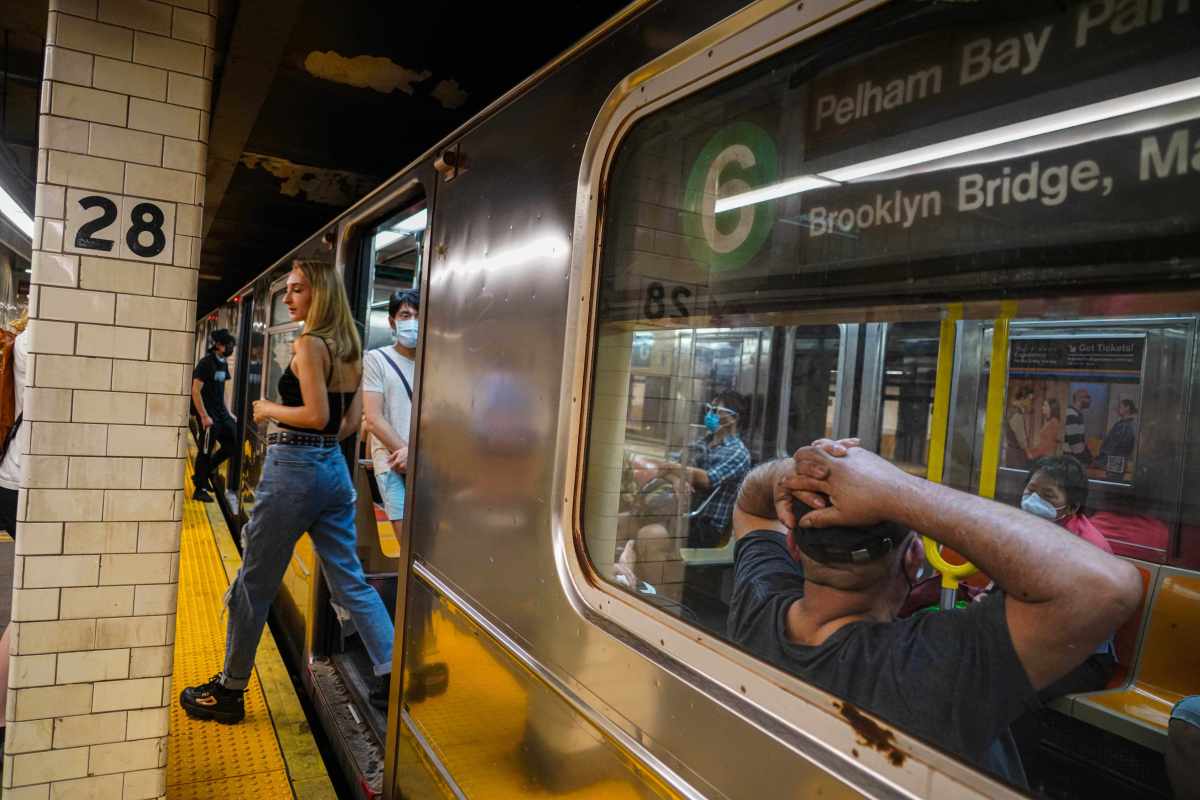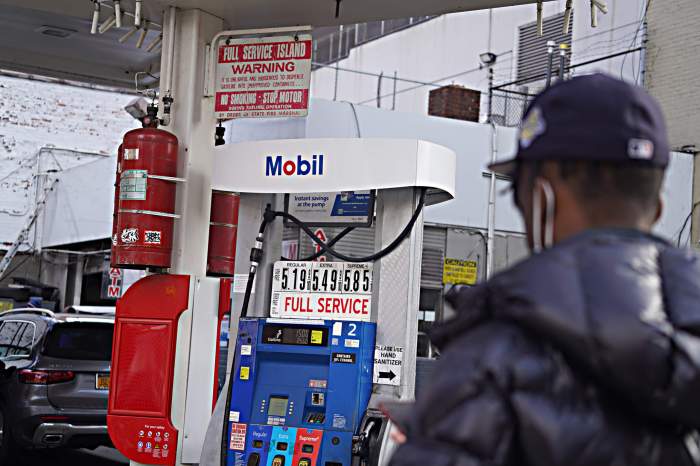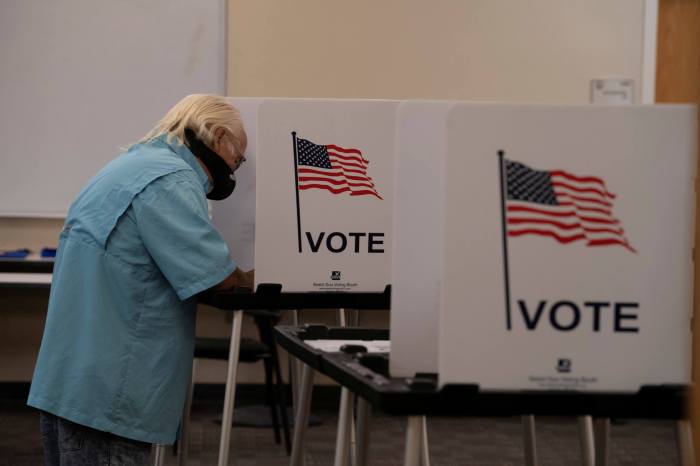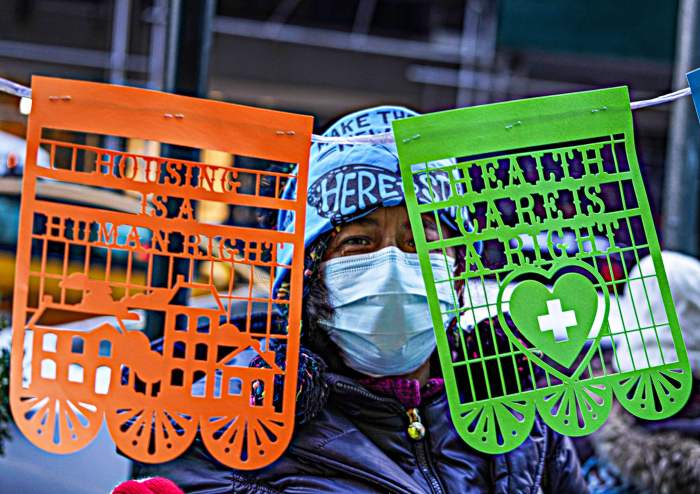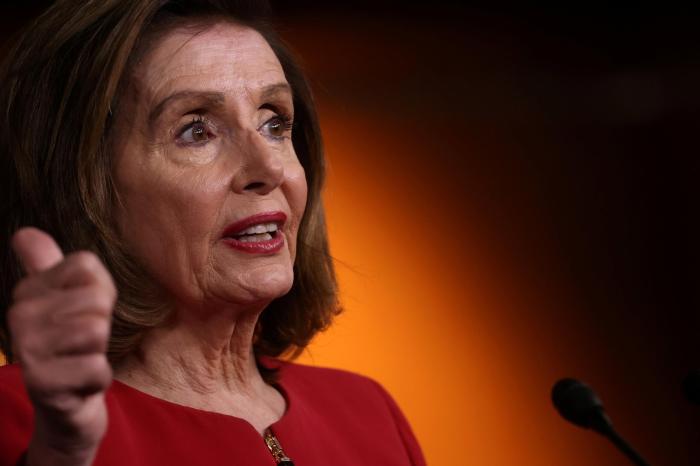The MTA’s “fiscal cliff” is coming one year sooner than expected after outside projections of ridership returns fell short.
Some $15 billion in federal pandemic relief money for the MTA will not be able to cover the agency’s multi-billion dollar deficits after 2024 instead of 2025, transit officials said during monthly MTA board meetings Monday, July 25.
“We’re basically out of federal aid by 2024, which is a year earlier,” said MTA’s Chief Financial Officer Kevin Willens at the agency’s Finance Committee meeting. “The bottom line is our fiscal cliff is in excess of $2.5 billion and is a year earlier than where just we were in February.”
The MTA will face shortfalls of around $2.5 billion a year come 2025 amid a drop in farebox revenues and stagnant ridership, which the Authority is highly dependent on to pay for running its subways, buses, and commuter rails in and around New York City.
Trip rates compared to pre-COVID numbers in 2019 have plateaued in recent months at 61% across all MTA transit modes.
Consultants with McKinsey and Company estimated back in November 2020 that the agency would be back at around 77% of pre-pandemic figures in 2022 and level off at 87% by 2026.
But the surge of the Delta and Omicron variants and, more recently, Omicron subvariants have thrown those forecasts off and led the MTA to ask the consultants to redo their estimates this spring.
The outside advisers now predict rates to rise to just 69% in 2023, 74% in 2024, 77% in 2025 and 80% in 2026.
Under a less optimistic “low case” scenario where workers who can stay remote only come into the office two days a week, ridership will rise to just 73% by 2026.
Full return of ridership may not come until 2035 or even later, senior MTA financial officials said.
The MTA will make nearly $4 billion less in fare and tolling revenue over four years between 2022-2026.
To stave off steep fare hikes, service cuts, and layoffs, the MTA will need to get new dedicated funding from state government to fill that multi-billion-dollar hole each year.
MTA financial officials are also looking at ways to change service to adapt to new pandemic-era travel patterns and find “efficiencies” in its operations.
Transit leaderss still plan to go ahead with scheduled bi-annual fare increases next year and in 2025, after Governor Kathy Hochul, who controls the MTA, postponed higher ticket prices for this year.
The agency could cut its annual deficit by about a billion dollars if transit officials choose to spread out the federal funding through 2028, rather than use as much of it as possible and largely run out by 2025.
But this approach requires a whole lot of new dedicated transit money from the state starting as soon as next year, to the tune of nearly $800 million in 2023 and around $1.6 billion each year after that.
Hochul and lawmakers in Albany did not allocate any new funds in the current budget, which lasts through spring 2023.
The change in how the money from Washington is spent would also pay off money earlier that the agency owes, meaning they’ll have to pay less in debt servicing and avoid the cost of using deficit borrowing further down the line.
“Given what we know now, in my opinion, this is the only responsible approach to best fund and deliver transit to the region,” Willens said.
Subway trip rates have returned faster on the weekends, while Monday-Friday trips have remained stagnant at just below 60% of pre-pandemic numbers for months, according to MTA’s counts.
Buses have seen higher returns on weekdays than on weekends, and a larger overall rate than on the rails.
The factors affecting fare revenues, according to McKinsey, include things like the future of remote work, how many non-work trips people take, how safe riders feel, more people choosing transit after congestion pricing in Manhattan is scheduled to kick in in 2024, and travelers shifting over to other transportation modes like bikes.
MTA Chairperson and CEO Janno Lieber has called on Albany politicians to fund the agency like other essential services, such as the Fire Department or Sanitation, and make it less reliant on fares, but the agency did not get that kind of regular cash infusion in this year’s state budget.



